Carpet beetles, a threat to our textiles
Have you spotted carpet beetles in your home ? Have they started to invade your home and you don't know where to start? A carpet beetle invasion can become complicated if you don't act quickly. In this dossier, you'll find a range of answers and products to help you combat this textile-eating insect.
|
I would like to |
|---|
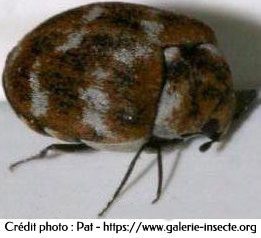 Latin names : Anthrenus museorum (from museums)
Latin names : Anthrenus museorum (from museums)
Anthrenus flavipes (furniture beetle)
Anthrenus verbasci (carpet beetle)
Order : Coleoptera
Family : Dermestidae
Size : 3 to 4 mm
Location : any habitat
Period : all year round
What you need to know about carpet beetle
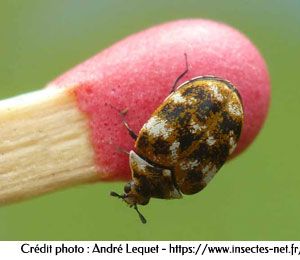
In summer, this insect lives outdoors, gathering flowers (particularly umbellifers and spirea). It lays its eggs in birds' nests, its larvae eating a variety of dried organic waste.
There are several possible sources of infestation: a bird's nest, organic insulation (wool, felt, hemp, etc.). Cut flowers can also help to transport these adult insects into homes.
Don't confuse the adult carpet beetle with a small ladybird, even though both belong to the order of beetles !
The larva lives in the dark (under carpets, cupboards, wardrobes, skirting boards, drawers, etc.) and its diet is very varied as long as it is organic. It mainly contains starch, vegetable spices, chitin, collagen and keratin.
With this type of diet, this insect is particularly formidable. It is capable of attacking all organic materials such as wool, leather, silk, dust, cotton, hair, animal hair and feathers, dandruff, dead insects and animals, carpets, furs, horn, insect collections, naturalised animals, etc, and of course textiles in which it makes large irregular holes.
 A single female carpet beetle can cause enormous damage.
A single female carpet beetle can cause enormous damage.
In the case of insect collections, it is mainly the smell of stored insects that attracts them. It will lay its eggs as close as possible to the food, in the display case if it can or in front of the place where the smell comes from. Once hatched, the extremely small larvae can penetrate the premises. If the display case is airtight, they will probably reproduce inside until the food runs out.
Whether it's museums, furniture or carpets, it's the carpet beetle's olfactory receptors that guide it to the place where food will be abundant for the larvae it will lay. Like moths, only the larvae are responsible for the damage caused in your home. To disrupt the adult beetle's olfactory receptors, the best prevention is to mask the odours. That's why our grandmothers used to put balls of naphthalene (a polycyclic aromatic hydrocarbon) in their wardrobes, a practice now banned for several years.
Unlike moths, carpet beetles leave no web. They do, however, leave excrement (the size of a grain of salt) or exuviae (former larval moults), which should not be confused with live larvae.
The larva measures around 4.5 mm and resembles a small white worm whose entire body is bristling with tufts of dark hairs, slightly longer on the sides. These hairs can cause allergic skin reactions. It is therefore preferable not to handle them.
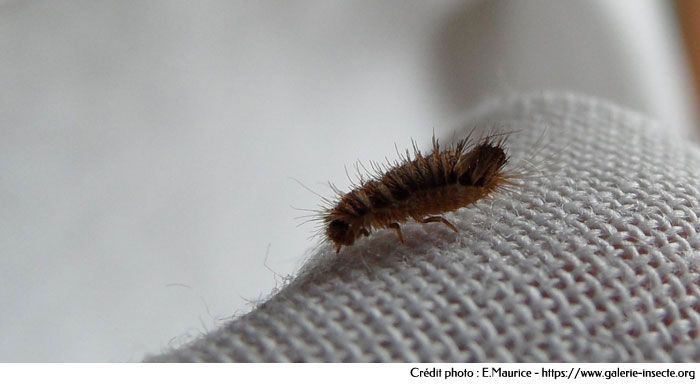 For several years now, more and more people have been reporting the presence of carpet beetles in their homes. While it's very easy to treat a cupboard, it's more difficult to treat an entire house. But, rest assured, it can be done. It just takes a little more time, courage and method.
For several years now, more and more people have been reporting the presence of carpet beetles in their homes. While it's very easy to treat a cupboard, it's more difficult to treat an entire house. But, rest assured, it can be done. It just takes a little more time, courage and method.
Life cycle of the carpet beetle
Mating takes place immediately after adult life begins. Female carpet beetles can lay between 20 and 200 cream-coloured eggs, 0.5 mm long and with spine-like projections at one end. Over a period of 2 weeks, these eggs are deposited in suitable cracks or cemented with sticky secretions at a potential feeding site for the larvae.
After 2 to 4 weeks, the eggs hatch, giving rise to the characteristic hairy, stocky larvae. Once mature, carpet beetle larvae measure between 4 and 5 mm, are brown and have 3 tufts of golden hairs arranged in pairs on the posterior segments of the abdomen. Their short, 5-parted legs are well developed, with a single claw on the terminal part. Carpet beetle larvae avoid light and roll into a ball when disturbed.
The length of the larval life depends on the temperature, humidity and quality of the food. Soiled foodstuffs are most often their favourites. During this period, the larvae go through at least 6 moults, but the longer they remain in their larval state, the greater the number of moults.
Transformation into a pupa takes place in the last larval envelope. The nymph stage lasts from 10 to 30 days. The adults live for between 2 and 6 weeks and are able to fly to the flowers on which they feed and look for egg-laying sites.
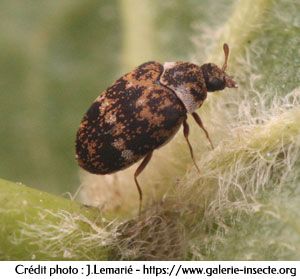
You can prevent carpet beetle infestations by regularly inspecting the areas where carpet beetles live and by adopting good cleaning habits, including regular ventilation of enclosed areas (cupboards, drawers, etc.). Sealing cracks and fissures can also be a good means of prevention.
It is also advisable to remove abandoned bird and insect nests from buildings.
You should also check cut flowers brought home for the presence of adult insects. And don't hesitate to shake and move the inside of your cupboards during the summer to disturb the squatters, because that's when they lay their eggs ...
It's the olfactory receptors that guide the insect and can therefore lead it to where it's not wanted. The best prevention is therefore to mask the fumes likely to attract them. This was the function of the mothballs used by our grandparents, or the lavender bouquet still used today against moths. Our moth repellent sachets work perfectly well to repel carpet beetles and prevent them from settling in drawers or cupboards. The same goes for our neem oil diffusers, hooks and sprays, which can be applied directly to the clothes to be protected (see below). Generally speaking, all our clothes moth products will also work against the beetle.
And what about essential oils ? Organic Atlas Cedar essential oil has really interesting insect-repellent properties, making it an excellent carpet beetle repellent. What's more, it will leave a pleasant woody scent in your cupboards. Simply place a few drops of this essential oil on a porous stone (or on our clay stone diffuser pebble), and place it in your drawers, chests of drawers, wardrobes and cupboards. You can also make small cushions to keep carpet beetles away by soaking them in a little Cedar essential oil. Remember to renew the oil regularly, especially in September, when the eggs hatch! But beware, essential oils will only have a repellent effect against carpet beetles. Remember that they should be used for prevention, not cure.
How to eliminate carpet beetle ?
The first thing to do is to remain calm and proceed in an orderly fashion. The following information will depend on the severity of the attack. Below is a suggested method for dealing with a confirmed invasion.
1. Empty your cupboard completely
2. Disinfect" the clothes: freeze for 48 hours for all items that can withstand cold or at a temperature > 70°C. You can also use Aries Textiles moth spray to treat any clothes affected or those you don't need immediately (winter/summer clothes, etc.). This spray, which contains neem oil, will also work against carpet beetles, even though it is primarily targeted at clothes moths.
Once the clothes have been treated, you can seal them in plastic bags or a completely airtight cover for complete peace of mind.
3. For clothes, you can also put them in a bin bag and fill the air space with insecticide. It's best to use Ecodoo insecticide made from alcohol and essential oils. Close the bag tightly and leave the insecticide to work overnight.
4. Vacuum all the nooks and crannies, especially the dusty ones, to remove eggs, larvae, insect corpses and organic debris that could feed the carpet beetles.
5. Treat all surfaces, nooks and crannies, cracks, etc. with Insecticide for All Insects (4J at 5%). This 500 ml spray bottle will treat about 5 m². For larger surfaces, use the same product in its concentrated form and dilute it at 5% in a spray bottle.
6. Put your clothes back on.
7. Finally, to disrupt their receptors, you need to install products that smell good but mask the odours. To do this, we offer 2 references. Don't be surprised if they're aimed at clothes moths. It also works perfectly for carpet beetles ! :
a - Pack of 10 packets of clothing moth repellent (contains cedarwood essential oil, an excellent repellent) packaged in a sealed aluminium sachet, to be placed on shelves.
b - ARIES textile moth repellent containing 2 diffusers that can be hung on a wardrobe hanger.
8. Don't forget to vacuum at least once a week and, if necessary, take the opportunity to spray with Ecodoo insecticide or Aries flying insect repellent before closing the cupboard.
9. To be on the safe side, once the 4J insecticide treatment has been carried out, you can use the Habitat Biovétol fogger, an automatic diffuser made exclusively from active ingredients of plant origin (available in 3 different formats).
To treat an entire house or large surfaces such as carpets, rugs, etc., we recommend you use a garden sprayer and 4J insecticide concentrate. Make your own preparation by diluting 5% of the insecticide with water. For information, a 250 ml bottle of 4J concentrate in 5 litres of water will treat 50 m².
To be really effective, you'll need to treat all the "dark" areas, such as behind skirting boards, cracks and grooves, as well as the surfaces. For this type of treatment, you can use the All Insects Pistal insecticide spray, which is particularly effective on larvae and eggs.
Go directly to the detailed product sheets for carpet beetle control.
*PAE : Ready to use
Here's what a carpet beetle looks like in motion
Frequently asked questions about carpet beetle
Q: I have a few questions about the use of your products on anthrax.
a- For the Ecodoo Tous Insectes aerosol, how much should I use for a 30-litre bin bag (3 sprays) ?
b- Does the smell kill carpet beetles or just scare them away ?
c- How long does it take for the eggs to develop ?
d- How long do they and the carpet beetles last, enclosed in a plastic box, in which I now keep my clothes? I then spray 2 or 3 times.
A: The answers in the order:
a- It all depends on how long you press the button. According to the manufacturer's information: 30 seconds in a 12 m3 room. So, if you spray for 3s, i.e. for 1 volume of 1.2 m3, for a 30l bag you're using 40 times the manufacturer's dose, I think that's more than enough.
b- This is not a repellent but an insecticide. Saturating the air in a bag forces insects to breathe in insecticide and die very quickly.
c- Concerning the carpet beetle (verbasci): 40 eggs which hatch after 10 to 20 days.
d- A larva trapped in an airtight box sprayed with Ecodoo insecticide dies very quickly. Without insecticide, no idea. If the box is completely airtight, the insect will die of asphyxiation but not of starvation. They can also die of thirst if the air is dry. As for the eggs, they will resist until they hatch and then do the same as the larva.
Q: I'd like to treat my parquet floor (grooves) against carpet beetles. 1/ It's an old, beautiful (!) varnished oak floor. Can I apply your products without damaging my floor ? 2/ What is the protocol for carpet beetles ?
A: If your floor is sealed and not waxed, there's no problem, but it's best to treat it with a spray in the groove (make sure the bottom of the groove is wet) as there's no point in treating the floor itself as the insects won't be inside. If you have insects, larvae or eggs in the grooves, they will be destroyed by the insecticide.
Q: I seem to have a small family of beetles in my flat. You say that you can get rid of them with insecticide. But which of your range is the most recommended for this type of beetle ?
A: You have a choice, depending on where they are located. You'll find several insecticides on our site, in different packaging. 4J and Pistal are effective on eggs and adults, but only if they are affected by the product. Ecodoo aerosol is a pyrethrum-based neurotoxicant that does not kill eggs but can kill adults that "breathe in" the product.
Q: My clothes are full of holes, but not my woollen clothes or my cotton clothes. What insects can cause this ? What solution can I use to treat my clothes ? I have a cat, could it be my pet ?
A: If there are holes in your clothes, you probably have moths or beetles. If they're big holes, it's certainly carpet beetle.
Q: Do you have a product that can replace naphthalene for insect boxes ? It's not clothes moths but collection insect boxes, I used to put a piece of naphthalene in a corner, but since it's no longer on sale, the insects are being eaten away by the bugs...
A: It's probably the museum beetle, which is a common sight in insect collections. These insects are attracted by the smell of "corpses". The naphthalene is only there to mask the smell, which generally works well. You can replace this product with our cedar essential oil-based clothes moth repellent packets, which have a strong smell but don't last as long (about 1 month). Before keeping insects away, you need to destroy the larvae that have probably settled in your collection. Our pyrethrum and alcohol-based ecodoo insecticide spray (which doesn't get wet and dries very quickly) should do the job without a problem.
Q: For the last 1 week I've had ladybird-like creatures climbing up the side of the windows. They have 1 white fang on each side of their mouth (I don't know the name, sorry). I've also hung up some washing outside and found 1 cotton jumper with holes in it. I found one in the dining room. What should I do ? Thank you for helping me, I'm making myself sick, I'm afraid of having them in the house. I don't even dare air the house any more. I've put lots of insecticide around the windows and in the house. I don't know if there's a connection, but I've got little holes in the garden. Could this be their nest ? What should I put in the holes ? I don't know whether I should use crawling or flying insecticide.
A: I think your bugs are carpet beetles.
Q: I'd like your advice on a product to eliminate carpet beetles and clothes moths, because I don't know which one is making holes in my clothes, especially the ones I've been wearing to sleep for some time now. This has been going on for years; I used to see butterflies, so I called in an exterminator. It stopped, only to start up again a few months later. For more than two years now, I haven't seen butterflies but the holes in my clothes, at stomach level. I'm constantly spraying Neem oil diluted with water, in my drawers, on the mattress and wardrobe. We're a family of four and only my clothes are attacked and that's at night when I'm sleeping! Do you have any products to recommend and do you deliver in Quebec, Canada ?
A: If you see butterflies flying, it's moths. If you don't see anything flying, they're probably carpet beetles, the adults looking like brown ladybirds. Incidentally, the description of the holes matches. You say you spray neem oil with water, but is this oil cosmetic or insecticide? If it's cosmetic, I'm not sure it's very effective and in any case, neem is not an insecticide but rather a repellent. As with the moth, it's the larva that makes the holes and hides during the day. According to our customers, carpet beetles are very difficult to get rid of. 5% insecticide is very good for treating surfaces, Ecodoo aerosol for treating enclosed spaces, pistal for treating cracks, crevices and other nooks and crannies, and Aries moth repellent for treating clothing. All these products are effective against moths and carpet beetles. We deliver to Canada with no problem.
Q: Hello, carpet beetles have infested our house. Larvae seem to lodge under our floor between the joists and despite 2 smoke bombs 4 weeks apart, we still find adults in the living room near the baseboards. We would like to find 1 product that could kill these larvae and adults when they come out of the floor at the baseboard level because it is impossible for us to have access under the floor. Do your products such as 4J or Pistal exert their contact action over several days or only for a few minutes after application? We have 1 infant of 2 months and 2 children, are these products harmful for them ? Should I leave the premises after application of the indicated product(s) and if so, for how long ? Thank you for your opinion. Cordially
A: Hello, the difficulty of a treatment under the floor is actually to be able to reach the larvae. Our insecticides are indeed contact insecticides. On the other hand, they will not have a remanence of several days. We want to stay on products whose composition is as natural as possible. You will therefore find neither synergizer nor additive, making it possible to reinforce the power of the active ingredient or to increase the persistence of the product. The 4J, like the Pistal act immediately (or almost immediately) on contact with the larvae, eggs or adult insects but degrade themselves in a few hours (depending mainly on the temperature of the room).
Compared to the harmfulness of the product, there is no concern. Nothing to do with commercial smoke bombs. Pyrethrum degrades on its own and disappears in a few hours. Depending on the product used, there may remain some traces of potassium soap or paraffin (which gives the asphyxiating effect on larvae and eggs), but they can be cleaned without any problem with a damp sponge or mop. In addition, the advantage of these contact insecticides (unlike a fumigant) is that you can ventilate during the treatment (and after) without worry. The smell of pyrethrum and the complex of essential oils can give a slightly strong smell.
However, as a precaution, because pyrethrum may be natural, it is not therefore harmless (especially when it is handled in its concentrated form), it is preferable to leave infants, children and cats in a room other than that treated. . The advantage is that 4 to 6 hours after the treatment, everyone can reinvest the treated part.
Q: Hello, I would like to treat my apartment (26m²) against carpet beetles. I have already bought Ecodoo product to treat all my clothes, bought moth repellent to stick in my closet, but I would like to completely treat my apartment to be sure to get rid of it. I have 2 cats, this weekend they are going to my sister's so I can do all this quietly. To treat the whole apartment I have to buy the 4J Insecticide concentrated with vegetable pyrethrum of 125ml ?
I plan to spray everything on Saturday morning, let it work and come back Sunday afternoon to wash and vacuum everything. Should I bleach afterwards ? Or do I just suck ? Is it dangerous for my cats ?
A: 4J Insecticide Concentrate: Yes. Against the carpet beetle, we recommend a dilution of this product to 5%. A 125ml bottle of concentrated 4J insecticide, once diluted in water at 5%, will allow you to cover approximately 25m². The bottle of 250ml concentrate, the double, i.e. 50m², etc. Your apartment is 26m², so a 125ml concentrated bottle should be able to cover the apartment for one treatment. Be careful, however, to also calculate the interior surfaces of the cabinets/cupboards. These surfaces will increase the treatment area to be provided.
Once treated, pyrethrum will act quickly on all insects that come into contact with the product, including eggs and larvae. 4J insecticide is a contact insecticide. That is to say that it will only act if you manage to put the product in contact with the insects. This data is important. The more surface you treat, the more you increase your chances of destroying them. Give preference to the treatment on the interior surfaces of cupboards, chests of drawers, drawers, having taken care to empty the spaces. Also target the surfaces where you have observed them, floors and carpets, etc.
There is no need to bleach afterwards. The surfaces can be washed with clean water to remove the small film of potassium soap that the product may have deposited. In order :
- A big vacuum cleaner before the treatment
- 4J insecticide treatment
- Again, a big vacuum cleaner
- Then a washing of the soil.
The 4J treatment must be done in the absence of the animals. The product containing pyrethrum, it could get under their paws, then ingest it while grooming. On the other hand, if the treatment is done on Saturday morning in the absence of the cats. You can come back with them on Sunday without any problem and reintegrate them into the apartment. The pyrethrum will have dried out and degraded. There will be no more risk for the animals.
Q: I placed an order recently to control a carpet beetle infestation in my apartment. I alternated this weekend with the 3 products, namely the 4J, Ecodoo and Pistal. I wanted to know if there was a contraindication to using these products frequently and in our presence. Last weekend I sprayed the baseboards with it and we were away from the apartment.
Also, is there any risk for a 3 year old child?
I am asking you these questions because although reassured by the explanations contained in your site, I am beginning to be worried on the other hand by what I read on many forums on the fact that insecticides must be avoided at all costs. And finally, I observe a very slight decrease in the number of carpet beetles observed but nothing obvious. Do you have any testimonials from customers who got rid of these critters? And if so, after cb of time? Thank you so much for your help. I am somewhat desperate.
A: Most commercial insecticides are composed of synthetic insecticides (organo-chlorine, carbamate, organo-phosphorus or pyrethroid). There are indeed many studies that have demonstrated the harmful consequences of the use of this type of insecticide on our health and on the environment. The insecticides we sell are exclusively composed of vegetable pyrethrum (which is therefore not synthetic). We have also recently excluded from our catalog a reference from Kapo Vert because they have started to add the formula of PBO, a synergist which increases the persistence and reinforces the action of the product, which is highly controversial.
We are therefore very careful to use only natural substances in insecticides. On the other hand, although we are talking about natural active ingredients, we must remain cautious about their use. Just because it's natural doesn't mean it's safe. It is therefore necessary to respect the precautions for use of this type of product. It is a contact product and has no persistence. After their application, they will only act for a few hours. There is therefore no point in leaving the products in place. Remember to ventilate well during and after the treatment. A leaching of the soils and the treated parts can also be carried out.
The only risk (even if it is minor) for a young child would be that it remains in the same room at the time the application of the products is made. He could inhale the product or move on all fours on the treated surfaces. It is therefore recommended to set it aside for a few hours.
We often have people who encounter carpet beetle infestations (especially in the spring). Most people get away with it. But each scenario is different. It depends on the degree of invasion, the configuration of your home and especially the way in which we proceed to apply the products. It is for this reason that we try to describe in our file on carpet beetles the methodology of action. It is to be adapted according to each case. But, from experience, more is better than less. It's no wonder you didn't get them all in one treatment. This is why we recommend repeating a treatment approximately 1 week after the first one. This allows you to destroy the carpet beetles that have evolved from an egg stage to an adult stage in 7 days and that you had not touched in the 1st treatment. With each treatment, you weaken and diminish them.
It is important to carry out each treatment in one go, in order to be sure to touch a maximum of anthrene and to prevent it from moving.




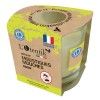
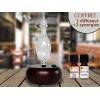

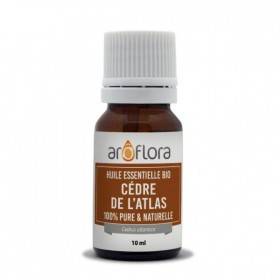

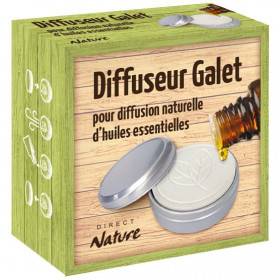
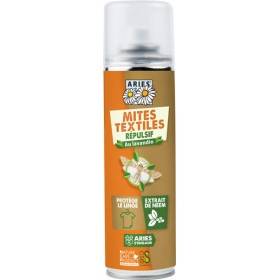
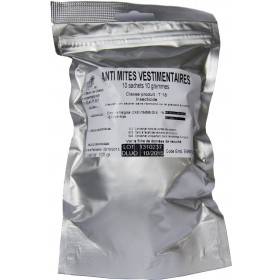
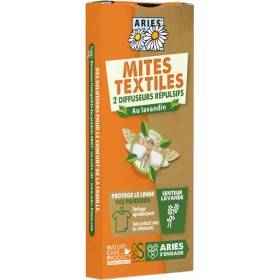
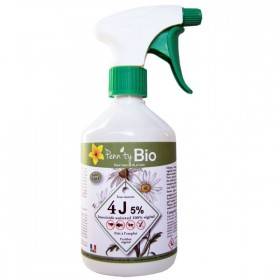

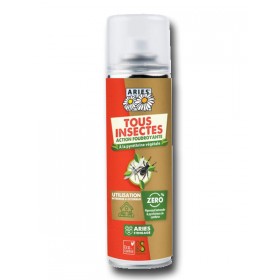
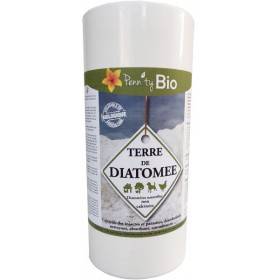
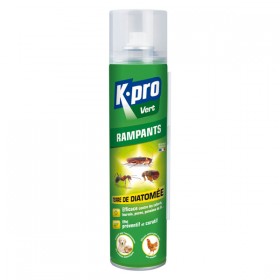
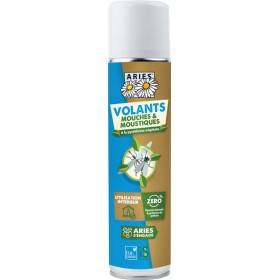
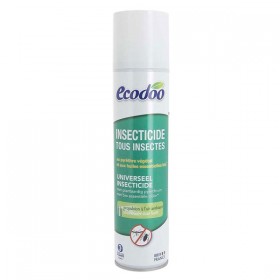
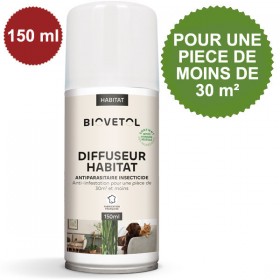
Customer reviews
Toujours parfait, livraison, emballage, délai et gentil petit mot personnel pour me remercier de ma fidélité.
XX
Service de qualité, suivi rigoureux, et rapidité au rendez-vous. Les produits sont très fidèles à leur description et pour un coût serré. A recommander fortement.
JACKY
Super efficace !!!
xx
Prix intéressants. Expédition super rapide à bon prix. Et tout ça de façon agréable !
Alexis M.
Envoi très rapide, personnalisé et soigné. Merci
XX
Je parlerais de vous a mes amies car vos produits sont vraiment excellents. Bien a vous et tous mes remerciements.
Patricia
Excellent site rapide et efficace. Descriptif intéressant.
XX
Bons produits, emballage impeccable, livraison super rapide ! Parfait !
XX
Comme toujours service "au top" réactivité, qualité produits... BRAVO et merci pour la qualité de votre travail
Annick
Rapidité de livraison. Très bon produits. Merci
Mélina
Parfait ! Envoi rapide et produits de qualité. Merci pour le petit mot. Je suis très satisfaite !<br />
Julieanaïs
Merci beaucoup pour l'info, c'est rapide chez vous, très appréciable!
Denis
livraison tip top tant en temps et en qualité.
XX
Vos explications par email ont été très claires et votre diligence dans le traitement de ma commande et de mes demandes est très appréciée.
Henri
Site pratique, compétent, prix corrects. Un envoi très rapide, et je dirai "parfait".
Greg
Je suis une amie de vos parents et suis toujours très satisfaite de tous vos produits. Ne changez rien et bonne continuation.
Marité D.
Très satisfaite de ma commande chez Penn'ty bio. Site très détaillé, produit reçu rapidement, message manuscrit très sympathique. Je recommande !
XM
Site très sérieux et personnel vraiment agréable. Envoi rapide. C est parfait !
Ingrid
Merci d'être à l'écoute pour notre terre et vos clients. Encore une fois je suis très satisfaite de ma commande. Et mes compagnons à 4 pattes sont ravis de se protéger en bio. Merci pour votre attention manuscrite en fin du bon de commande..
Raymonde julie L.
Commande reçu très correcte, très bon matos, encore merci et bonne continuation.
Dominique et Monique A.
Produits performants. Très satisfaite de vos services.
XX
J'ai reçu le colis, merci beaucoup de votre promptitude et bonne continuation.
Louise
Avec les trois lettres BIO dans votre nom, je ne m'attendais pas à découvrir des billes de polystyrène comme matériaux de rembourrage. Il y a certainement plus écolo !
Michel D.
Sav très réactif et efficace suite à avarie durant transport. La livraison du produit en remplacement du colis défectueux à été particulièrement rapide. Merci.
Valérie
Je voulais vous remercier +++ pour votre gentillesse et surtout... votre compétence. C'est vraiment de l'excellent travail... j'ai été bluffée :-)<br /> Renseignement téléphonique 10/5 - produit 10/5... encore merci
Maryse
Une utilisation de vos produits a suffit pour nous débarrasser des poissons d'argent. Merci.
Matthieu
Je vous remercie beaucoup de m’avoir fait profiter d’un acheminement par Colissimo alors que rien ne vous y obligeait, sauf votre conscience professionnelle, chose rare de nos jours et qu’il ne faut jamais manquer de souligner.
Cécile
Après un souci sur l’article livré, le site a fait preuve d’une excellente communication (simple et efficace par sms) qui m’a permis de me faire livrer un 2nd article par la marque très rapidement. Parfait !
Pierre
Livraison très rapide; Tout était parfaitement emballé. Je referai appel à vous.
JV39
ANNE
Satisfaction totale. Entreprise au top. J'ai téléphoné le lundi matin, malgré que les contacts téléphonique ne sont que l'après midi, une personne très charmante m'a rappelé presque aussitôt pour mes donner les infos que je souhaitais connaître sur ma commande. Bravo. nous sommes mercredi et ma commande est arrivée. Encore bravo continuez comme ça.
Jacques M.
Colis parfaitement emballé et produits conformes. 1 des produits était très fragile et est arrivé en excellent état, merci :o) Pourquoi achetez à l'étranger alors qu'on a de si belle s entreprises en France? Tarifs identiques ou moins chers que chez Amazon ;o)
Stéphane C.
Après 2 traitements à 3 jours d'intervalle, j'ai réussi à éradiquer toutes les punaises de mon canapé. Produit hyper efficace que je recommande vivement.
Emmanuelle
Envoi rapide et soigné. Emballage ecoresponsable. Je suis ravi d’avoir trouvé des pièces de rechange pour les diffuseurs à huiles essentielles!
Ina L.
Client depuis de nombreuses années, je suis satisfait à la fois de la boutique et de pratiquement tous les produits achetés.
Jean-Claude
J'ai bien reçu ce jour, en bon état, les 2 diffuseurs galets. Merci aussi pour votre petit mot manuscrit me souhaitant un bel été. Fidèlement,
Annie
J'ai passé ma première commande, chez vous il y a trois jours à peine et ce matin, je reçois mon colis.
Sophie
Envoi rapide. Rien a redire.
Marie France
Un grand merci pour la qualité et la rapidité de votre réponse.
Tony
J'ai bien reçu ma commande. Com' dab' , rapidité efficacité ...Merci
Sally
Très bien , bon produits, La prochaine commande avec plaisir, livraison très rapide.<br />
Rainer
Louise
Juste ce petit mail pour vous dire que j'ai bien reçu votre colis et que mon patron est enchanté ! Ca embaume les huiles essentielles dans le bureau et... ça ne fait pas de bruit ! Encore un grand merci pour votre gentillesse et votre souplesse commerciale.
Sonia
Super produits accueil plus que parfait gentillesse. Livraison au top merci beaucoup
Christiane
Comme d'habitude, envoi soigné, produits performants, Merci.
XX
J’ai découvert cette société en faisant une recherche sur Internet pour trouver un insecticide contre les sclérodermes. Je ne peux pas encore juger l’efficacité de chacun des produits par contre je suis très satisfait de la rapidité et de la qualité d’expédition, ainsi que du sérieux de la société. J’ai même reçu un petit échantillon est un mot personnalisé j’ai trouvé ça très sympa! Merci beaucoup et bonne continuation pour votre société que je recommande déjà.
BJ79
Très bon site avec de très bons produits et un soin particulier apporté à la préparation de chaque commande... De plus, Sophie et Quentin prennent la peine d'écrire un petit mot de remerciement avec la commande envoyée....c'est peu commun mais très sympa....:-)
STEPHANE P.
Site intéressant. Je l'ai découvert, en fait. Produits ménager éco-responsable. Bon pour la maison et non agressifs. Merci.
Mydiadao
trés satisfaite de ma commande,( produit, et livraison,rapide ) MERCI
Danièle M.
Produit conforme aux attentes.<br /> <br /> <br /> <br />
Alain
Marie-Noëlle
Site très pratique. Commande aisée. Suivi régulier. Délai de livraison respecté. Colis très soigné. Tout est parfait.
Nicole
Produits de bonne qualité, naturels et efficaces, expédition rapide et bien emballée, sav très rapide suite à une erreur de ma part,
XX
Rien à redire, de la commande à la livraison.
XX
Un plaisir de recevoir les colis soignés et respectueux de la planète de Penn’Ty Bio. Merci
k.
Des produits très efficaces quand on suis dans l'ordre le traitement. Un léger petit bémol sur le spray insecticide, si possible essayer de trouver un spray plus puissant et plus large pour une diffusion optimale dans les coin et recoin inaccessible. Sinon tout est nickel est une excellente qualité de résultat.<br /> PS: Il faut prendre tout les produit pour un traitement efficace en foyer privé (maison).
Florian G.
Parfait comme d'habitude
Sylvain
Everything was very nice ! Keep handling your customers likes this!
xxx
Toujours très bien et parfaitement emballé ! Merci<br />
Valérie
J'ai bien reçu le diffuseur et j'en suis très content.
Paul
Je suis très satisfaite de mon échange avec le service client (personne à l'écoute, de bon conseil). Envoi rapide et soigné, avec un petit mot sympathique de l'équipe, le top!
XX
Bonjour. Je souhaite vous remercier pour votre rapidité. Le colis est arrivé en bon état . Les huiles que nous avons commandées embaument la maison. Ce diffuseur est génial.
Christian
Tout est parfait à chaque fois. L'attention portée va même jusqu'au petit message, c'est agréable. Fidèle aux produits et au site plus que jamais.
xx
Pour ma part j'ai été satisfaite de la réalisation de ma commande et du délai de livraison. Je recommande votre société.
Nelly
Très bon site. Navigation facile. Les commandes sont expédiées rapidement comme annoncé. Aucun problème depuis que je suis cliente. Je recommande Penn'ty bio.<br />
Elvyne
Client depuis des années Produits de qualités et surtout qualité de service.
XX
Bonjour Monsieur,<br /> Nous nous étions parlés au téléphone il y a quelques années. Bravo pour l'évolution de votre site et vos dossiers instructifs. Vos produits aussi sont très bons. Bonne continuation, bien cordialement.
Marina
Livraison rapide et très bien emballé et protégé. Très bonne efficacité. <br /> <br />
XX
Correspond à mes attentes
Henry
Penn' Ty Bio, c'est ma référence depuis 10 ans au moins. Je ne commande mes produits de toilette et d'entretien que chez eux. Les marques et le service est irréprochable.
GAELLE
Infestés de puces de parquet, le produit a agi en moins de 24 heures. Livrés en tout autant de temps. Le seul produit qui ait fonctionné et en plus archi cool pour la nature.
Nicolas
Sophie. A
Site internet complet, beau et facile d'utilisation<br /> Commande complète et correcte.<br /> Commande emballée a la perfection avec du matériel recyclable, compostable<br /> Délai d'envoi respecté même a l'étranger (Pays-Bas)<br /> Mention spécial pour le petit mot personnalisé ++<br /> On sait pourquoi on commande chez Penntybio depuis 10ans :)<br /> Bonne continuation
Jennifer A.
Je confirme efficacité sur la préparation et expédition du matériel. un grand merci
Jeremy
Merci pour votre démarche si respectueux de l’humain, des animaux et de l’environnement !
A.F
interressante. Beaucoup d'articles référencés. Après pour la lutte contre les punaises de lit, je ne suis pas sure de l'efficacité de certains produits. C'est un vrai fléau ces bestioles.
Francelyne D.
Client depuis plus de 10ans. Toujours satisfait du matériel propose. Boutique sérieuse prix compétitifs livraisons et suivis rapide.
XX
j'ai reçu mon colis aujourd'hui, merci c'est très rapide et sérieux.
Clara
Livraison conforme et rapide. Les produits sont emballés dans des emballages recyclables, voire compostables : j'ai beaucoup apprécié. Je recommande ce site.
Patrick
Merci à tanteOdile pour m’avoir fait découvrir votre site. Depuis je suis une cliente assidue. Très satisfaite de la rapidité des envois, de la qualité de vos produits qui sont par ailleurs très bien détaillés par leur composition et leur mode d’emploi. Une amie vous a rejointe également avec la même satisfaction <br /> Continuez.
Marité D.
Cliente depuis plusieurs années. Super service, réactif, cordial. Les produits sont excellents.
Christine
Maryse
Très contente d'avoir découvert ce site internet ! Du conseil jusqu'à l'achat c'est super. J'étais très embêtée après l'apparition de petit insecte chez nous (des anthrenes) et c'est le seule site internet e-boutique qui a pu nous renseigner dessus et enfin indiquer les produits pour les éradiquer sans pour autant nuire à notre santé (mais en respectant les conseils d'utilisation bien sûr). J'ai reçu ma commande rapidement, et avec surprise un petit mot de remerciement personnalisé avec mon nom dessus. Des détails qui au finale font la différence. Un service de qualité rien à dire. Merci !
XX
Excellent site d'achat. Très rapide et que de bons produits.
James
Bravo pour votre sérieux. Colis reçu très vite et produits impeccables. Belles fêtes de fin d'année
Mat
Très bien...merci.
Olivier
Site sérieux. Bons produits.
Magali
Diffuseurs qui sortent vraiment de l'ordinaire, un envoi parfait - merci BCP
Anthony
Produits facile à utiliser, efficaces et finalement pas plus onéreux, à l'usage que des produits issus de la pétrochimie. Service livraison impeccable. Je recommande +++<br />
XX
Un diffuseur plus de 80 M², avec huile essentielles eucalyptus, vraiment formidable, on respire mieux et çà sent super bon. Le matin 1 heure, et le soir 2 heures. De jolies couleur, et pour les fêtes une jolie ambiance. Bravo.
PATRICK
Très bon produit facile en entretenir, pas cher.
XX
Livraison efficace et bon contact oral avec mon interlocutrice.
Maussane
Je voulais juste vous remercier. J ai reçu mon répulsif " lézards" aujourd'hui, un petit mot super gentil joint à ma commande ça fait plaisir. J espère que ça va fonctionner. Bonne journée à vous et merci.
Cynthia
Très bon site. Envoi rapide. Prix moins cher que sur d autres sites. Bravo et bonne continuation.
Camille
Commande bien reçue. Je suis tout à fait satisfaite. A bientôt.
Tania
Merci pour votre sérieux et la réexpédition ultra rapide d'un achat non conforme (dont vous n'étiez pas responsable).
Marc
Merci pour le geste commercial, et aussi pour les nombreux conseils et l'excellent service client.
Tristan L
Envoi rapide, emballage au top, continuez comme ça... :-)
bruno b.
Très satisfaite. Je recommande cette société sérieuse. bon suivi de la commande.
Sandrine
2 commandes à mon actif et jamais déçue. Vous avez gagné une cliente régulière :) Merci pour votre sérieux et le contenu bien rempli de votre site ! c'est super d'avoir une description hyper détaillée de chaque produit.
Magali
Alex
Contente de voir que d’autres alternatives naturelles aux produits plus nocifs soient proposés. Entreprise sérieuse dont commandes sont très bien honorées. Merci.
Capzoe
Françoise
Excellent article sur les diffuseurs d'huile essentielles ! grâce à lui j'ai pu faire mon choix basé sur une excellente analyse de votre part !
Laurence
Super !
Yann
Produit performant et raisonnable au niveau prix. Je recommande
XX
Marie Aline Roux
Livraison rapide et soignée. J'utilise les produits bio qui sont de très bonnes qualités. Un savon m'a été envoyée par erreur à la place de celui commandé et il m'a été remplacé très rapidement. Bravo pour leur réactivité. Je recommande fortement ce site.
Liliane
Toujours satisfait et pour les prix et pour les produits.
andré a.
Mon avis sur penntybio, très bon produit sur ce site pas une gamme monstrueuse mais que du très bon, et pareil pour les livraisons ultra rapides et le excellent sav si besoin. Je recommande vivement. Client depuis 2018 aucun soucis.<br /> <br />
thierry g.
Très bons produits, service rapide et de qualité, rapport qualité/prix intéressant. Je recommande vivement.
Alain
Claudine
très bons produits et service commercial très performant, continuez sur cette voie, merci.
Annick
Merci pour tout le soin que vous mettez pour une livraison individualisée, chaleureuse et aussi peu impactante que possible sur l'environnement !
Sandra
Produits utilisés depuis très longtemps, toujours la même qualité ! Je recommande, les délais de livraison sont très courts, produits très efficaces.
Laurence
Livraison rapide. Produits bien emballés.
Bruno
Excellente communication, service très rapide (même à l'étranger), emballage parfait ...
Jacques N., Belgique
Une entreprise fiable, efficace, de confiance, chez qui je recommande de faire ses achats.
S.
Bonjour, j’apprécie depuis longtemps votre travail : la qualité de vos informations et des produits que vous vendez.
Frederic
Merci pour votre efficacité et votre gentillesse, commande, livraison, petit mot agréable, tout était parfait !
Sylvie
Bon produits et service !
Rose-Marie
Bonjour Sophie et Quentin,<br /> Je viens de recevoir ma commande et je tenais à vous remercier pour la rapidité de l'envoi, votre gentil petit mot et le petit présent qui sent bon et donne envie. Bel été à vous deux également
Geneviève
Au fil de mes commandes (j'en suis à la 5 ou 6ème) décidément, du sérieux et de l'écoute ! chaque fois que j'ai eu un petit problème: contact immédiat, réponse immédiate, et tir rectifié illico ! Dans le top 5 de mes sites internet !
Vincent
Livraison en temps record à l'adresse indiquée en France puis départ dans l'océan indien. Reception des produits en quinze jours à l'autre bout du monde : ravie. Je vous laisserai les avis produits une fois utilisés. Le site est très bien fait et très agréable à utiliser. Le petit mot à la main dans le colis humanise la transaction, je l'ai apprécié. Je pense que vos produits sont très utiles et je vous souhaite une belle réussite et sur la durée.
Sylvie D.
Livraison très rapide et produits intacts à l'arrivée grâce à un emballage impeccable.
Etta
Fidèle à votre marque, je tenais par ce mail à vous féliciter vous et votre équipe pour votre longévité. Votre marque est toujours gage de qualité et sérieux.
Céline
Efficace, livraison rapide.<br /> <br />
H
Noëlle G.
Merci beaucoup pour la rapidité avec laquelle vous m'avez fait parvenir le diffuseur.
Bichette
MERCI au personnel à l’emballage !!! Ma dernière commande était super bien emballée. Elle a résisté aux (épouvantables) chocs subis pendant le transport. Merci
Veronique
Livraison rapide et bien emballé. Petit message manuscrit qui fait plaisir :)
xx
Envoie soigné et rapide.<br /> Merci pour le petit mot à la main.<br /> Très appréciable.
XX
fidèle cliente de Penn'Ty Bio, je ne me fournis que chez eux.
XX
Très satisfaite.
Louise
Bonjour, colis bien emballé arrivé sans encombre, démarche écolo bien ancrée et petit mot perso. Merci à l'équipe de Penn'Ty Bio.
Sofi
Tout est parfait : la qualité des produits, la rapidité d'expédition, la qualité du colis. Je suis enchantée et resterai fidèle à ce site.
Dominique
Bon produit, efficace et laisse une odeur plutôt agréable. Expédition rapide, emballé avec soins. Je recommande
Mary
De très bons conseils, une livraison rapide et des produits de qualité !
Fabienne P.
On ne peut pas toujours faire confiance à des sites de ventes sur le web, mais sur Penn'Tio, j' y viens les yeux fermés. Excellente communication avec le service clientèle, un suivi sérieux. Je remercie chaleureusement toute l' équipe.
Sergine T.
clair net précis. merci
jannick
Très contente de vos produits.
nathalie G.
Jean-Yves
1ère commande. Très satisfaite : Colis expédié très rapidement et bien emballé. Merci pour votre sérieux.
Ghyslaine
Cliente depuis plusieurs années, j'apprécie toujours ce site. Meilleures salutations.
France
SATISFAITE
ANNE
JM
Livraison rapide et fiable, dès que le chèque a été reçu. Produits de bonne qualité.
Chantal H.
Tout va bien. Bonne année 2021.
Bernadette M.
J'ai bien reçu mes articles et je vous remercie pour la livraison rapide et impeccable !
Françoise
Produit de qualité conforme à mes attentes, envoi rapide et soigné, très bien.
Anne
je vous remercie pour vos services, c'est très agréable d'être informé de la sorte. colis bien reçu Merci pour la rapidité de la livraison
Bernard
Produits d'excellente qualité, arrivés rapidement, et conformes à leurs descriptions.
Michelle G.
J'ai enfin reçu le petit colis, hier. Il a mis un mois pour me parvenir, mais vous n'y êtes absolument pour rien, comme je le pensais, il a été mis de côté lors de la grève nationale. Je vous remercie d'avoir fait faire des recherches, j'ai reçu un mot de la poste.
Hervé
yvette
Un super magasin en ligne, avec plein de produits disponibles.<br /> L'envoi a été très rapide et soigné, avec une très bonne communication à chaque étape. Bref, une adresse à connaitre et à garder ! Merci !
Pab57
J'apprécie depuis de nombreuses années la qualité de vos produits et le sérieux de votre site. Une petite mésaventure avec un diffuseur me permet de vous féliciter pour la réactivité de votre SAV. Bravo !
Thierry G.
Je suis arrivée sur votre site en cherchant un diffuseur que je viens de commander, mais je voudrais vous dire que votre site est très intéressant, bien fait. Vos dossiers sont enrichissants merci
Joelle
Livraison express. Colis toujours aussi bien préparé (cales, flocons, adhésif sur les bouchons qui risquent de couler). Bravo pour votre professionnalisme.
Isabelle
Merci beaucoup le colis est arrivé à la poste hier et je te retire aujourd'hui Merci pour votre efficacité et votre rapidité
Ingrid
Livraison très rapide. Notice livrée avec les produits ainsi qu un petit mot très agréable. Produits très efficaces, avec de l huile de coude, on en vient à bout. Le produit concentré nous a permis de tout éliminer. Par précaution, nous avons tout de même utiliser le spray. Dans une pièce, nous avons utilisé le fumigène. Pour les animaux, la mousse semble efficace. Dans quelques jours nous ferons le shampooing et plus tard les pipettes. Mais franchement après avoir utilisé d autres marques qui ne fonctionnaient pas, nous sommes ravies et nous recommandons ces produits. Merci
Virginie C.
Vos produits sont de bonnes qualités et les produits très bien emballés
Dominique
livraison rapide ,prix raisonnable , produits super efficace j'ai vite calmé mes douleurs lombaires ...enfin soulagée . Merci pennty bio
JEANNINE
Les produits achetés sur le site sont de très bonnes qualités, et j'ai été très bien conseillée. Je recommande !
Aurore
Sav rapide et disponible. Au top
Severine
produit parfait.
René
Excellentes prestations. Les produits sont formidables, l'emballage aussi. Les délais d'expédition compétitifs. Je recommande vivement Penn'Ty Bio à tous ceux que l'état de la Planète pour les générations futures inquiètent.
XX
Merci à Penn'Ty Bio pour la qualité des produits, la réactivité de l’Équipe et le petit mot attentif qui accompagne les colis. Votre site est précieux !!
Veronique B.
Parfaitement parfait, je ne me fournis que chez Penn'ty bio depuis qu'ils m'ont débarrassée de punaises de lit.<br />
MARIE CLAUDE G.
Merci. Je tenais à vous faire part de ma grande satisfaction. Je suis enchantée par les produits et par le service. Salutations et bonne continuation,
Odile
Les produits achetés sont excellents. Ils répondent parfaitement à ce que je cherchais. Bravo pour votre site
Michel
Livré hyper vite. Bravo !
Mick
Bien reçu. Bravo pour votre extrême rapidité. Merci
Magali
Bons produits. Fonctionnent très bien.
xx
J'ai bien reçu le colis sans aucun problème. Merci pour la rapidité et le sens du service.
Nicolas
Dimanche soir, invasion de vrillettes du pain. Lundi matin, commande en urgence des produits verts adéquats. Mardi, livraison, traitement et fin de l'invasion.
Jean-Pierre
Boutique sérieuse. Commande arrivée très rapidement. Merci pour votre gentil mot avec la facture.<br /> <br /> <br />
I Defoy
Bon service et bon produits
Odile R
C'est vraiment magnifique et ce cadeau a plu, je commanderais pour Noël.
Martine
Dommage, les vendeurs ne savent pas lire les indications inscrites sur les produits qu'ils vendent
XX
Rapide, sérieux, très bien emballé, un sans faute.Merci.
L.H.
Merci beaucoup pour votre rapidité et votre professionnalisme.
Julie
Excellent service et livraison rapide. A conseiller pour la santé des animaux (chiens et chats)
MICHEL
Merci pour vos conseils avisés. Et merci pour vos produits de qualité.
Loïc
J'apprécie les services de Penn'ty bio. Un maximum d'étoiles pour eux.
Ch. D.
Très bien, je recommande cette boutique
Salomé
livraison rapide, produit conforme.Prix séduisant.
XX
Très bon produit juste ce qu'il faut à prix attractifs Envoi rapide.
xx
Rapide, sérieux et qualité, produit correspondant à la description, très contente, je recommande votre site et vos produits.
Corinne
accueil téléphonique personnalisé réactif compétent et bienveillant, livraison rapide et conforme. BRAVO merci pour la qualité de votre travail
Annick
Je vous remercie pour vos services. C'est très agréable d'être informé de la sorte.
Anthony
merci de votre disponibilité et amabilité!
Eric
Pennty Bio? Einfach genial. Super rapide , bon produits, super service-livraisons. Je vais recommander bientot =)
xxx
Un accueil téléphonique très agréable et de très bons conseils. <br /> Merci à vous.
XX
Bon produit. Merci Penn'Ty Bio. Un seul passage dilué à 5% et les puces ont disparus. Il en restait deux ou trois qui ont dû se perchés pendant le traitement mais sinon c'est performant.
Axel
comme toujours excellente réactivité, livraison très rapide et qualité produits TOP. Merci pour votre compétence.
Annick P.
MOI JE DIS INCROYABLE !!!<br /> Plus que mieux d'une rapidité de dingue ! bravo et le colis impeccable surprotégé.<br /> Que toutes les entreprises prennent exemple sur vous. merci
AURELIE A.
Personne disponible, de très bon conseil suite à des punaises de lits dans mon habitation, les produits sont efficaces car depuis aucune punaises et la vie à repris son cours ... merci pour tout
Nathalie
Site très sérieux, de très bons produits et la livraison est rapide.<br />
Isabelle
Site intéressant proposant de bons produits, attractifs et respectant la nature. Le regret c'est le prix de certains articles.<br />
Catherine
très satisfaite de ma commande site vraiment sérieux livraison soignée et rapide ,les articles sont conformes a la description,je suis enchantée et recommande vivement
Marie Viviane C.
Rapidité de traitement et petit mot avec le colis très appréciable.
XX
Envoi rapide et soigné, produits efficaces et réponse rapide à mes questions. Je recommande.
xx
Service très réactif, emballage soigné , livraison rapide. <br /> Rien à redire . Continuez !!
Sophie
très bien je recommande.
Sylvie
J'ai été TRES bien conseillée lors du contact. Produit naturel donc c'est parfait.
Lilla
Super, envoi rapide,bien protégé et petit cadeau !
xx
Commande bien reçue . Je suis très satisfaite Merci pour votre sérieux
LILIANE
Très contente des produits de qualités et une commande reçu très rapidement. Merci
PATRICIA A.
Très rapide pour la livraison en Belgique et sérieux. Merci<br />
Corinne
Excellents produits. Excellent service.
James T
Efficacité de la livraison , très rapide . Produits livres en parfait état . Très bien emballés . Merci.
Geneviève
Bon rapport qualité-prix. Envoi rapide et sécurisé !
Chrile
super emballage écolo...bravo !
Isa
Service rapide et efficace. Bons produits
XX
colis dans les temps,emballage parfait,super accueil téléphonique pour renseignement, je recommande ce site.
ROSCO
Un grand merci pour votre professionnalisme et la qualité de vos produits. Longue vie à votre site.
XX
Commande reçu en 2 jours, impeccable. Tous les produits emballés avec le plus grand soin, petit mot personnalisé! Et encore un petit savon bio au parfum délicieux comme cadeau!! Merci Penn'Ty Bio !!
Orchidée
merci pour votre professionnalisme. Merci pour les produits envoyés dans de bons délais. Merci pour la qualité de vos produits
Marcelle
Bon choix, bons conseils et service livraison très rapide. J'aime faire mes courses sur ce site.
FDA
Je tenais à vous remercier pour la commande que je viens de recevoir ce matin. Merci beaucoup et je n'hésiterai pas à recommander sur votre site.
Sandrine
Jamais déçue : les produits correspondent à la description et sont livrés rapidement.
Mireille
Excellent site. Très à l'écoute. Livraison rapide. Problème avec un piège à guêpes un autre m'a été livré très rapidement. Chapeau et très agréable de tomber sur des gens compétents.<br /> Encore merci.
XX
Bonjour <br /> C'était ma première commande sur votre site et j'en suis très satisfaite <br /> Je vous remercie pour votre professionnalisme (site, prise de commande, livraison) ainsi que pour le petit mot qui rend le tout humain. Très belle journée.
CG
Tout est parfait de la commande à la réception. Commander jeudi et reçu samedi. Et très contente de mon achat . Je recommande
Nadege M.
Content des produits achetés, reçu rapidement et bien emballé. Merci.
XX
Les produits commandés sont conformes à mes attentes. Quant à l'accueil au téléphone, il est parfait et nous avons toujours trouvé un terrain d'entente. Je fais confiance à Penntybio.<br /> Merci.
XX
Juste un petit mot pour vous remercier de votre disponibilité et pour vous dire également que je suis très satisfaite des produits que j'ai acheté, ils sont vraiment efficaces.
Barb.
Très bon site, du personnel sérieux et la livraison en temps et en heure. Merci
Marine T
Ravie de découvrir un site qui présente des produits de qualité avec une vraie démarche éco responsable à des tarifs intéressants.
XX
Je suis cliente depuis de nombreuses années. Toujours satisfaite du site, des produits et de la livraison.
martine O.
Beaucoup de soins dans la commande reçue. Je recommande!
XX
Franchement, Penn'ty bio, c'est top ♥<br /> Quentin est super réactif, de très bons conseils. Encore merci de votre efficacité.
Hélios ☼♥
Super produits, envoi rapide et soigné, conseils et échanges courtois ! Une jolie boutique en ligne pour acheter en toute confiance ! <br />
Patricia
Cliente fidèle depuis plusieurs années, je ne peut que recommander ce site. Tout est parfait. Tous les produits au top, rapidité d’envoi, gentillesse, allez y les yeux fermés vous ne serez jamais déçus.
Marité 06
livraison impeccable, produit bien emballé et correspondant au descriptif, excepté pour la surface de diffusion, ma salle principale doit faire 25m2 maximum et ça ne se diffuse pas au-delà.
Pascale
Entièrement satisfaite.
Ch. D.
sérieux
XX
Livraison rapide , le tout correspond à mes attentes.
Julie
Bonjour, je voulais vous féliciter pour la clarté de votre site, la rapidité de la livraison et la qualité de l'emballage.
catherine R.
J'adore ce site qui fait un vrai travail de sélection de produits que je ne trouve pas ailleurs et sur une large gamme. Je recommande.
Veronique G.
THIERRY
Service au top !!!<br /> Colis reçu très rapidement avec un petit mot manuscrit me remerciant de ma commande et de la confiance que je leur ai témoigné <br /> Suffisamment rare pour être signalé <br /> Je vous encourage toutes et tous à les soutenir en passant commande chez eux!!!!<br /> Longue vie à Penn’Ty Bio !!!!<br /> Ils le méritent
Pierre-Steph
Très bien ! envoi rapide et conforme à ce qui est annoncé.
Jacqueline S.
Les produits ont été très appréciés par la destinataire. <br /> De plus quand on pose une question, on a toujours une réponse, un conseil très rapidement. Merci pour votre réactivité
xxx
Très bon site, très sérieux je recommande, produits de qualité et service après vente au top, de plus livraison des plus rapide et produits très bien emballés, tout est parfait
virginie
Colis très bien protégé service rapide. Merci. Site très sérieux .
Elios R.
En cette période d'avant Noël, je craignais que me colis arriverais en retard. 48h après mon achat, c'était dans la boîte aux lettres. Du coup, je suis large pour mettre mon achat sous le sapin. Merci à vous
Art4
Envoi très rapide et bravo pour votre site de reconnaissance des insectes nuisibles.
Brice
Nous sommes très satisfaits du service client : mot personnalisé dans le colis, disponibilité du service après-vente... Nous souhaitons à votre société un succès croissant.
Sara
très bien livraison dans les délais, colis intact, bon produit.
Martine
Livraison très rapide. Bravo pour la réactivité
François
Hélène
Toujours aussi "réactif" et efficace<br /> Bravo et merci pour votre professionnalisme.
Annick P.
merci pour le suivi de ma commande et les mails par lesquels vous m'avez tenu informée.
Zoé
Impeccable.
Christine
Livraison rapide et petit mot manuscrit joint au colis, vraiment très sympa! Merci et continuez, vous le méritez.
Jean-Pierre
Livraison très rapide et colis emballé soigneusement.Site à recommander.
isabelle d.
Merci pour votre geste que j’apprécie.<br /> Cela fait plaisir de retrouver l’esprit commerçant de proximité chez un vendeur en ligne. Je surveillerai attentivement cette nouvelle livraison.
Philippe
Un grand merci pour cette commande envoyée très rapidement. Je recommanderais votre site
Elise
Livraison rapide, emballage plus que parfait, le diffuseur NEOLIA est merveilleux pas bruyant, fonctionnement idéal. Merci PENNTYBIO pour votre sérieux, site web à recommander.
CLAUDE
Je voulais non pas faire une réclamation; mais vous féliciter pour vos produits que j' ai bien reçue, et également pour la rapidité de votre envoi ce qui est plutôt rare dans d'autre site.
Jérôme
Très bien !
XX
Je trouve l'essentiel sur le site à des prix défiants toute concurrence. Continuez comme cela.
XX
Quel dommage pour le produit manquant, je vous remercie pour le remboursement.
Didier
Produit anti puce extrêmement efficace !<br /> Le vendeur a pris une demi-heure de son temps pour m'expliquer absolument tout ce qu'il y avait à savoir sur le produit, de la composition a la mise en œuvre.. Bref au top ! Je recommande donc vivement Penn'ty !
Louis
j'ai reçu mon colis aujourd'hui, merci c'est très rapide et sérieux.
Nathalie
Bon site, fiable, rapide et efficace.
Leo L.
Produits livrés rapidement dans un colis non surdimensionné, les produits sont conformes à la description. Je recommande vivement ce site très bien fait !
Hervé
Je suis vraiment très satisfaite de la prestation de ce fournisseur : délai de livraison très rapide et emballage des produits réalisé avec un maximum de soin. Bravo !!
Eliane
Je tenais à vous remercier pour votre service de qualité, une livraison toujours rapide, des colis bien emballés - qui évitent fuites et casse, ainsi que pour le petit mot personnalisé joint à chaque commande, c'est toujours très agréable.
Isabelle G
Après la découverte des punaises de lit dans 2 chambres de notre vieille maison, j'ai trouvé votre site. le dossier m'a été très utile et je suis très contente d'avoir trouvé des produits moins toxiques que ce que proposent les autres sites de vente.<br /> Je vous remercie d'avoir répondu à mon mail car c'est un peu l'affolement quand on découvre chez soi des punaises de lit.
Françoise S.
Très satisfait de Penn'Ty Bio : choix étendu,prix raisonnables délais de livraison rapides.
xx
Bravo ! je vous félicite pour votre efficacité ne manquerai pas de vous conseiller. Merci à la prochaine commande
Anthony
J’ai bien reçu mon colis et vous remercie de votre rapidité. Bravo pour le geste écologique et durable. Emballage nickel ! Et mon chat a adoré jouer avec les billes jaunes !
Anouk
Service clientèle très réactif en cas de difficultés. Livraison rapide. Emballage des produits fragiles excellent. Maison sérieuse, je recommande.
Marie
Livraison ultra rapide, bien emballée. Produits au top. Parfait !
Caty
Merci et bravo pour la qualité des produits et du service toujours aussi efficace et performant.
Annick P.
Parfait. Rien à redire. Extrêmement efficace.
Quentin
je viens de réceptionner ma commande. Tout est ok. Merci pour ces produits respectant l'environnement et l'être vivant.
Anatole
J'ai découvert ce site en cherchant de la terre de Diatomée. Livraison rapide. Très sérieux. J'ai mis la page dans mes favoris car j'ai repéré d'autres produits.
Isa
Service rapide et efficace. Et Sympathique ! toujours un petit mot, ça fait la différence. Et c'est français en plus :). Je recommande.
XX
J'ai été très déçue de ne plus trouver mon déboucheur dans mon biocoop habituel, et perplexe en apprenant qu'il était remplacé par un produit à base de soude...c'est comme ça que je vous ai trouvé sur internet.<br /> Alors merci pour le dépannage, pour le mot gentil qui accompagnait mon colis , et bravo pour le calage en amidon de maïs compostable!<br /> Bravo pour votre démarche et à très bientôt.
Cécile D.
Merci pour l'expédition de la pièce de verrerie qui a été recu cette fois sans casse. Meilleures salutations et à très bientôt sur votre site pour un prochain achat .
Louane
Ma commande s'est déroulée sans aucun problème avec une livraison rapide et soignée. La satisfaction est au rendez-vs ! Continuez ainsi ! Merci et cordialement !
Etoile 07
Colis bien arrivé. Emballage remarquable. Diffuseur très joli, très efficace et peu bruyant avec de la couleur qui change. Très satisfaite de la commande.
Sabrina
Site de produits naturels et bio très bien fait, agréable et fiable. beaucoup de produits de qualité.
Anne Marie R.
Très satisfaite de ma commande. Emballage soigné et envoi rapide. Merci beaucoup pour votre professionnalisme !
Sophie
service très efficace à chaque fois que j'ai commandé. aucune mauvaise surprise sur la livraison. je recommande
Agnès
Très satisfaite, merci.
Christine
Je vous remercie de votre professionnalisme et de votre réactivité.C'est loin d'être toujours le cas lorsque l'on commande sur internet.
Gaëlle
Fiable, et très bons produits , Service après vente efficace et sympathique.
Vilma V.
Très bonne adresse où l'on trouve des alternative aux produits chimiques notamment contre les insectes. Le service client est également de très bons conseils.
ck
Pennty bio prends le temps de renseigner et donne de très bons conseils.<br /> Les produits sont emballés soigneusement et la préparation des commandes hyper réactive. Je recommande les yeux fermés !
Mattloumag
Livraison toujours rapide. J'ai expérimentée le service après vente qui à été excellent avec une réparation rapide et sans frais. Je recommande vivement Penn'Ty bio
Nadine
Super, livraison rapide, suivi très rigoureux, site de confiance, très sérieux à recommander... Merci pour tout.
Bernard
Livraison rapide et produit conforme à la description. J'approuve à 100% le principe du recyclage des éléments d'expédition. Un produit fabriqué une fois soit avoir plusieurs vie. Bravo pour cette initiative.
Christophe
Commande tout à fait conforme et emballée avec grand soin.
Sarah
Tout à fait satisfait de la qualité de la livraison ainsi que du produit commandé.
Régis
Site sérieux, proposant de bons produits, efficaces en particulier sur les punaises de lit, fléau actuel. Merci car entre les produits et les housses de matelas nous avons réussi à les éradiquer dans deux maisons à deux ans d intervalle. <br /> Bravo aussi pour la livraison la plus écologique possible.
L.C
L’esprit commerçant de proximité chez un vendeur en ligne !
Philippe
Excellent!! Commande passée le lundi, reçue le mercredi!!! Les produits sont en plus de super qualité !
MADELINE
Parfait !
Mireille
Efficace rapide et à l'écoute. Diversité des produits. Efficacité des produits. Respect des délais de livraison et prise en compte des spécificités client PMR ( ce n'est pas toujours le cas). Site bien fait pour navigation et produits bien mis en valeur. Des promos et des bons de réduction cumulés en fonction des achats. Merci pour votre efficacité rapidité et professionnalisme.
xxx
Livraison très rapide et produits bien emballés.
Catherine
Commande facile, livraison impeccable et produits fiables. Merci.
Isabelle
Bien, la majeure partie des produits sont efficaces. Je connais cette boutique depuis plusieurs années, je recommande ce site.
XX
Efficacité redoutable. enchanté.
Robert
livraison rapide, produits bien enveloppés avec juste un petit bémol : pour l'imperméabilisant dont le couvercle n'était pas bien fermé.
Alain
Suite à un précédent message notifiant une erreur de produit à la livraison, Penn'Ty bio m'a fait parvenir à titre gracieux le bon produit. Merci
Martine
rien a redire, sauf, le montant des frais de livraison, un peu élevé.
XX
J'ai toujours été satisfaite de mes commandes chez Penn'ty bio. Rapide efficace. Surtout les caractéristiques des produits est claire et complète. et le site contient beaucoup d'informations sur les différentes gammes. Merci pour votre travail et votre activité.
XX
Une boutique en ligne, sympa et très réactive. On apprécie surtout la livraison express. Pas besoin d'être américain pour livrer dans des délais de champion !<br /> <br />
Daniel de Paris
Commande et livraison rapides!<br /> Rien à dire, c'est parfait !
Christine
Très satisfaite. Merci.
CM
Merci pour votre envoi : rapidité, ponctualité, information de suivi du colis etc. Vraiment du bon boulot.
E.G
Explication, commentaire et livraison en un temps record, tout était parfait, même le petit mot de remerciement écrit à la main ! Merci beaucoup
Monique S.
Commande passée le jeudi soir, colis livré chez mon "commerçant-relais" le samedi matin. Quelle rapidité ! Du vrai professionnalisme !
Emeline
J'ai reçu mon colis hier. Merci de vos démarches,
Sam
Hyper cher :: très déçue du prix par rapport à la quantité de produit acheté. Sur le site internet, les flacons semblent grands, or pour 80 euros je me retrouve avec 4 flacons de petits produits insecticides... trop cher
xxx
Bons produits conformes à mes attentes et livraison au top. Je recommande vivement.
Chantal P.
Excellents services, très serviable
XX
Modèle conforme bien emballé délai respecter continuer comme ça parfait.
Carlos
C'est la deuxième fois que je commande sur ce site. J'ai découvert qu'il existait des verreries aux dimensions différentes. Mon diffuseur étant ancien, j'ai chercher le modèle le plus adapté et j'ai trouvé! Mon diffuseur fonctionne à nouveau
Christiane D.
J’ai bien reçu le nouveau diffuseur fonctionnel après essai et je vous remercie pour votre confiance et votre rapidité sur le traitement de mon problème. Ce n’est pas tous les jours que l’on voit un SAV aussi efficace !
Florent
Merci à Penn'ty bio d'avoir garder beaucoup de produits de la marque Lerutan et pour le sérieux dans la préparation et l'expédition des colis. Je recommande.
SR
Service de qualité, suivi rigoureux et rapidité au rendez-vous. Mon colis est arrivé vite même avec un paiement par chèque. Les produits sont très fidèles à leur description et pour un coût serré. A recommander fortement.
Vincent
fiable et de bonne qualité pour les services et les produits :)
XX
anne-marie B.
Très satisfaite des délais, les produits sont bien emballés et le petit mot sympathique est fort agréable!<br />
Sylvana
Je suis ravi de trouver les produits de qualité et d ‘efficacité incomparable.
Denitza K.
Très bon produit, conforme à la description.
MICHELE P.
C'est ma première commande chez Penn'Ty Bio, et ce ne sera pas la dernière.<br /> J'étais à la recherche d'un nouveau diffuseur d'HE et, après discussion avec Quentin, mon choix s'est arrêté sur l'Elixia (Direct Nature) qui est d'une efficacité redoutable et d'un silence absolument surprenant.<br /> La livraison s'est faite en 72h en point retrait avec un conditionnement hyper sécurisé.<br /> Lors du déballage, j'ai constaté un léger défaut de finition sur la verrerie.<br /> J'en ai fait part à Quentin par texto avec photos à l'appui.<br /> Il m'a aussitôt recontacté pour me proposer un envoi d'une nouvelle verrerie dès que disponible.<br /> Un professionnalisme et un sens du service exemplaires qui font de cette enseigne une valeur sûre.<br /> Penn'Ty Bio est vraiment la boutique en ligne qu'il vous faut connaître.<br /> Je vous la recommande vivement.
Jean-Yves S.
C’est la première fois que je commande sur ce site et pas déçue livraison rapide de ce produit que l’on ne trouve pas partout. Je recommande
Patrick
Pas encore essayé le produit, mais le site est très sérieux. Livraison dans un temps éclair, même si je suis en Belgique. Emballage soigné. On peut faire confiance.
Roberta
Commande bien reçue;je suis tout à fait satisfaite;à bientôt
Sonia
Site clair, envoi rapide, marchandises bien emballées, et un petit mot charmant!
SM
BIEN,CONTINUEZ COMME çà.
XX
Cela fait plusieurs fois que je commande chez Penn'Ty Bio et je suis toujours satisfaite de la qualité des produits et de la rapidité d'expédition. Je recommande ce site !
Ghyslaine
Commande reçue rapidement, très bien
XX
Tout etait parfait, produit,prix,delai<br />
Marco
Commande reçue assez rapidement. Merci pour votre sérieux.
Émilie
Merci pour cette première commande, envoyée très rapidement, et dans un petit colis, avec frais de port très raisonnables.
Valérie O.
j'ai bien reçu la commande et je vous remercie pour votre efficacité.
Margot
Bravo et merci : produits de qualité et service TOP... continuez !...
XX
Un grand merci pour votre offre et votre professionnalisme. Pour un service en ligne, vous savez vous rendre proche de nous. Bravo et "suerte" !
Pierre M.
Parfait! Préparation et expédition de la commande hyper rapides. Emballage très soigné (j'ai acheté un produit fragile). <br /> Je suis très satisfaite!
Elise M.
Très satisfaite du produit.Rapidité et emballage très soigné.SERIEUX.
MARLENE
bravo pour votre réactivité et la qualité des produits
Annick P.
Bravo ! je vous félicite pour votre efficacité et ne manquerai pas de vous conseiller.
Nicolas
J'adore. Très grande diversité de produits, les explications sont simples et complètes.Quand aux colis, ils sont extrèmement bien protéger. Un grand merci.
Nadine
Toujours impeccable, les produits, les services. Depuis que j'ai changé de facteur, plus de soucis. (Ça n'est arrivé qu'une fois!!!)
XX
Parfait.
Philippe
Très satisfaite par Penn ty bio. En effet, suite à un produit défectueux ( housse matelas) , j'ai aussitôt reçu un bon de retour pour renvoi gratuit en colissimo et ai reçu la nouvelle housse dans les 48 h, avant même le renvoi de la première housse. Merci pour la réactivité et la confiance de cette entreprise.
dominique B.
Un grand merci pour la qualité et la rapidité de votre réponse.
Simon
Site de grande qualité !
Rose Anne Marie
Très bons produits efficaces.
XX
Bon produit mais frais de port un peu cher.
Marie Paule
super contente, j'y trouve facilement les produits dont j'ai besoin et le service est impeccable et gentil !
Hélène S.
Très satisfait du site livraison rapide.<br />
Michel
Parfait comme site, commandes faciles à faire et livraison rapide !
Cindy
Je me permets de vous écrire un petit mot afin de vous dire que votre site est très bien fait.
Tom
Totalement satisfait. Les produits sont super efficaces et tout est très bien suivis. Je recommande vivement ce site.
Stéphane N.
Rapidité, emballage nickel et écologique, mot de remerciements personnalisé, produits au top....j adore....je suis une nouvelle cliente conquise. Un grand merci...
Hélène P.
Excellent service après vente après un problème d acheminement de colis par la Poste. Une relation client de très grande qualité. <br /> Cordialement,<br /> <br />
PV
Livraison rapide et avec colis préparé avec soin :)
Florian
Après essais de divers produits, votre insecticide 4J est le seul à être venu à bout des puces ramenées par le chat de la maison. Livraison rapide par chronopost
JEAN MARIE
2 commandes à mon actif et jamais déçue. Vous avez gagné une cliente régulière :) Merci pour votre sérieux et le contenu bien rempli de votre site ! c'est super d'avoir une description hyper détaillée de chaque produit.
clara
Emballage au top. Livraison rapide et sans dégâts.
xxx
excellent.
XX
Grande gentillesse et efficacité : que demander de plus ? Merci !
Chantal M.
Boutique très sérieuse avec un envoie rapide et des produits super efficaces.
XX
Excellente réactivité !!! Produit en stock, commandé le 23 dec à 8h30, recu le 24 dec à 9h30. On peut guère mieux faire ! Super communication avec le vendeur.
Xavier
Bonjour Sophie & QUENTIN, Merci pour votre petit mot. . . . Ça fait chaud au Cœur de voir qu'il y a encore des Gens Comme VOUS sur cette planète ! Le monde devient de plus en FOU ! ! ! Cordialement.
Dominique T.
Je ne connais pas encore tous les produits mais contente de ce que j'ai commandé. En revanche un peu cher quandmême ce qui me limite.
xxx
Très réactifs entre la commande et la livraison. Je suis toujours satisfaite de mes commandes soigneusement emballées !
France L B
Félicitations pour la qualité de votre site & la valeur de ses informations ! Continuez ainsi ! On a besoin de vous !
Ronald
La livraison est rapide, je n'ai jamais était déçue de ce site, et les produits sont pas chers et de très bonne qualité!
Patricia
colis reçu ce jour, merci pour le flacon offert
Andrée
C'est extrêmement délicat de votre part d'avoir fait diligence. Je ne manquerai pas de recommander votre site et de souligner votre gentillesse. Encore merci
Michel
Jean Claude
Service très professionnel et très rapide. A conseiller fortement.
Didier M.
Merci et surtout, continuez, c'est rare de trouver sur internet une relation aussi personnalisée sur un mode aussi agréable.
Sabine
Première commande chez Penn'Ty Bio : <br /> - navigation sur le site = 5/5<br /> - préparation du colis = 5/5<br /> - Prix compétitifs = 4/5<br /> - Qualité des produits sélectionnés = 5/5<br /> <br /> Vendeur à recommander.
Gaëlle
Juste un petit mot pour vous remercier du message accompagnant mon colis ! Je croise les doigts pour que les produits marches mais entre-temps, je voulais vous remercier et en profiter pour vous souhaiter à mon tout un joli printemps.
Rose B.G
Bon produit , envoi rapide.<br /> <br /> <br />
Christine
Les produits sont de bonne qualité. Leur prix est raisonnable. Ils sont livrés rapidement, et en bon état.
XX
Une grande compétence, Monsieur Dufil est très professionnel et sait soigner ses clients. Quand à la gamme de produits proposés, elle est parfaite et complète.
Alain A.
Livraison rapide , produits de qualité, je recommande Penn'Ty Bio.
XX
Très bons produits je les recommande.<br /> Merci à Pennt'ty Bio pour tout, aussi bien pour les commandes et les emballages.<br /> Bravo Pennt'ty Bio.
Bernadette G.
Je viens de recevoir la pastille noire aujourd'hui et je vous remercie de votre envoi gratuit (ce qui est rare de nos jours).
Laurence
Site très réactif livraison rapide le produit Stop tique et puce est parfait sauf le pulvérisateur.
Danielle B.
Commande reçue rapidement, frais de port raisonnables pour expédition à l'étranger et les produits sélectionnés au top! Merci!
Cédric Adolphe B.
Leave a review | See all